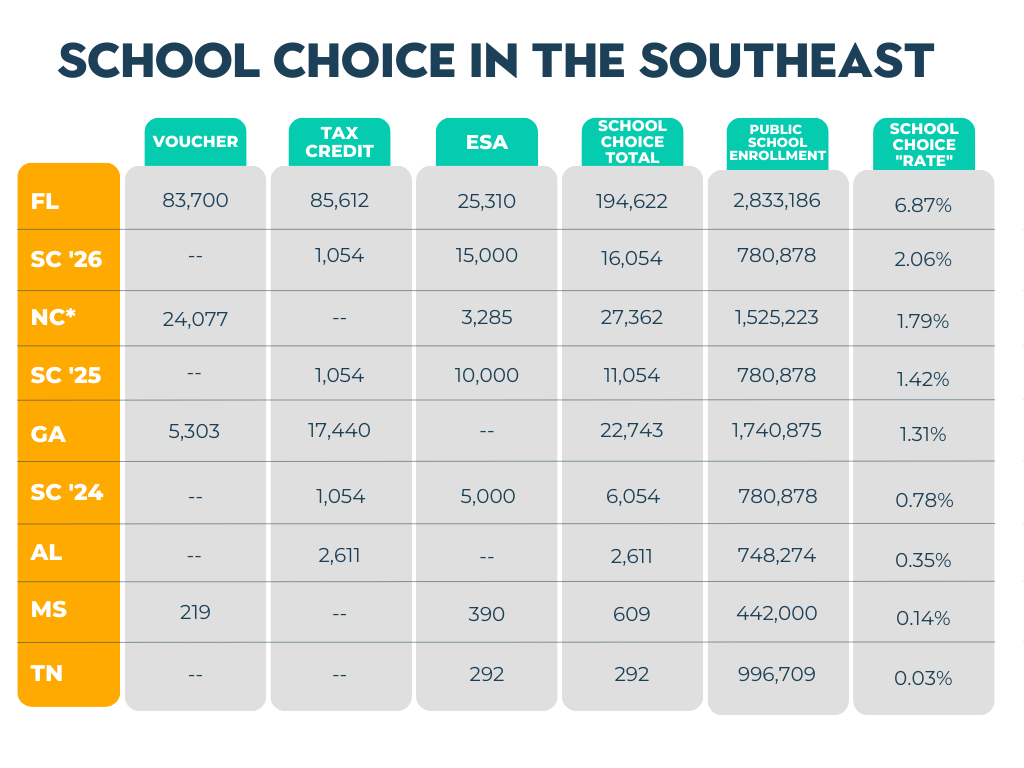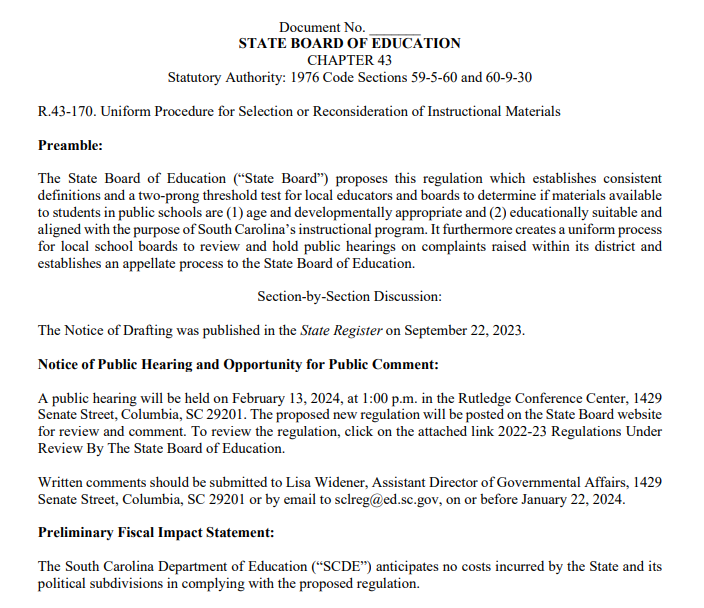Tarheel Shocker: North Carolina Reshuffles the School Choice Deck in the Southeast
North Carolina has been moving the goalposts on tax reform for nearly a decade. Now, in an unexpected turn of events, the Tarheel State (with a Democrat Governor no less) has tossed down the gauntlet on school choice.
On September 22, North Carolina became the tenth state in America to pass universal school choice. Universal school choice is when there are no income, previous public school attendance, or special needs status barriers to school choice access.
In reviewing this surprising and transformative expansion, we should note that North Carolina (unlike South Carolina and most of the rest of the Southeastern states) is not burdened with a constitutional Blaine Amendment.
To understand Blaine, let’s first take a step back and explain the three major types of education freedom programs: vouchers, tax credit scholarships, and ESAs.
Vouchers are the oldest and the simplest form of school choice. The state provides a student with a voucher that can be used at the private school of the family’s choice. The school exchanges the voucher for money from the state. But, due to state “no-aid” or “Blaine” amendments (again, in all Southeastern states except for North Carolina and Tennessee) vouchers are not legal everywhere, including South Carolina. Tax Credit Scholarships are funded when a taxpayer directs the funds already owed to the state in taxes to a scholarship granting organization (SGO). The SGO then awards the scholarships. With an ESA, the state places funds into individual accounts that parents access online and direct to a host of education services customized for their child, including (but not exclusively) private schools. ESAs have become the default program for universal school choice states.

As the table above shows, each Southeastern state has its own combination of program types. With the implementation of the recently passed ESA bill (S.39/Act 8) South Carolina will see the creation of 5,000 new scholarships for 2024-25, but that number will keep us below 1% of students participating in school choice. In its third year, with 15,000 scholarships available, the ratio will improve.
Another option for expanding school choice in South Carolina is S.285, a bill that has passed the Senate and resides in the Ways & Means Committee of the S.C. House. S.285, known as “ACE,” is a tax credit program.
Were it not for North Carolina‘s bold stoke, with both ESAs and ACE (or an expanded ESA program to 25,000 or 30,000 students), South Carolina could have been on a pace to be second only to Florida soon.
But as with tax reform, we cannot expect our neighboring states to stand still. Florida continues to push the envelope on education freedom as does Tennessee. Our sources in Georgia tell us that after a decade of frustration, an ESA bill is looking promising there for in 2024 as well.
If South Carolina is to be competitive, we must acknowledge that there is much done, but so much left to do.





